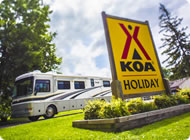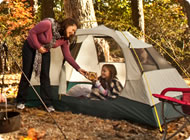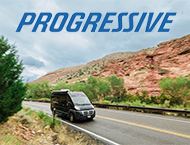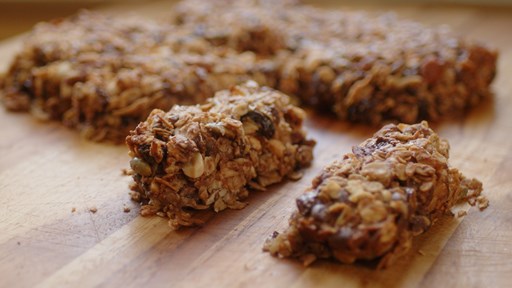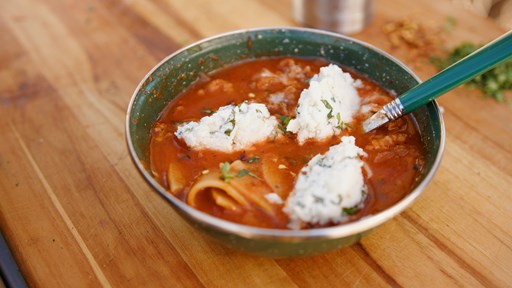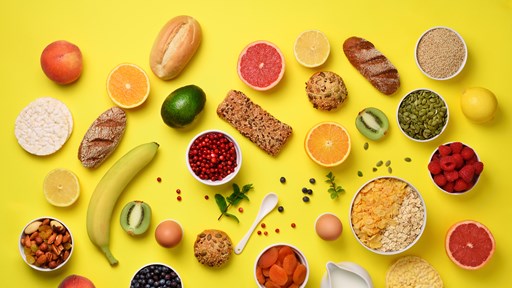Planning an outing? Awesome! But hold up – before you start dreaming of roasting marshmallows under the stars, let’s talk about something crucial: food! That’s right, because a camping trip isn’t complete without some delicious outdoor meals.
We’re going to spill the beans on how to make your camping cooking game strong. We’ll cover everything from smart packing tips to choosing the right gear, cooking in harmony with nature, setting up your outdoor kitchen, taming those flames, and keeping things clean.
So, if you’re ready to take your camping cuisine to the next level, let’s dive right in!

1. Plan Like a Pro: Prepare for Culinary Success
When it comes to camping cooking, planning ahead is your secret sauce for success! I mean, you’re nestled in the wilderness, the sun setting on the horizon, and the aroma of a sizzling campfire feast filling the air. But wait, how did you get here? It’s all in the meticulous planning, adventurer!
Start by crafting a detailed checklist of camping essentials. Think ingredients, cooking utensils, and everything in between. From the salt and pepper to that trusty spatula, leave no culinary stone unturned. Trust me, nothing dampens outdoor dining dreams like realizing you forgot the marshmallows for those gooey s’mores!
Now, let’s talk about weather woes. Mother Nature can be unpredictable, so it pays to be prepared. Check the forecast before you pack and anticipate any potential curveballs. Rain in the forecast? Pack a tarp to shield your cooking area or, better yet, bring along some backup no-cook snacks just in case. Because, hey, a little rain shouldn’t rain on your camping cooking parade!
Remember, a well-prepared camper is a happy camper. So, channel your inner Boy Scout (or Girl Scout) and leave no stone unturned in your planning process. With a little foresight and a whole lot of enthusiasm, you’ll be cooking up a storm in no time.

2. Packing Wizardry: Smart Solutions for Savvy Campers
Packing smart – the art of fitting everything you need into your camping kit without feeling like you’re hauling a small village on your back. It’s all about maximizing efficiency and minimizing bulk, so let’s dive into some pro tips.
First up, lightweight and multipurpose gear are your new best friends. Think collapsible dinnerware that takes up minimal space in your backpack or car trunk. Who needs clunky plates and bowls when you can pack flat and still enjoy your meals in style?
Next, let’s talk utensils. Opt for space-saving options like foldable or telescopic utensils that tuck neatly into your pack. They may be small, but they’re mighty when it comes to functionality. Plus, they leave more room for the essentials – like that extra bag of marshmallows.
Now, onto cooking tools. Versatility is key here. Choose items that pull double (or triple) duty, like a multitool with built-in utensils or a pot that can double as a serving dish. Streamline your setup to keep things simple yet effective. After all, who needs a dozen gadgets cluttering up their camp kitchen?
So, pack smart. Prioritize lightweight, multipurpose gear that won’t weigh you down on the trail or cramp your style at the campsite. With a bit of savvy packing, you’ll have everything you need and more for a memorable camping cooking experience.

3. Gear Up for Greatness: Choosing Your Outdoor Kitchen Arsenal
When it comes to camping cooking, choosing the right equipment is like picking the perfect hiking trail – it sets the stage for an unforgettable adventure. Here’s the lowdown on selecting gear that’ll take your outdoor culinary escapades to the next level.
First things first, invest in quality, durable gear that’s built to withstand the great outdoors. Sure, it might cost a bit more upfront it’s worth every penny when you’re whipping up gourmet meals under the stars. Think sturdy cookware that can handle a little rough-and-tumble action and won’t let you down when you need it most.
Now, let’s talk stoves. Whether you’re a die-hard backpacker or a car camping aficionado, a reliable portable stove is a must-have. Look for models that are lightweight, compact, and easy to use – bonus points if they can withstand windy conditions or chilly temperatures. After all, nobody wants to wrestle with a finicky stove when they’re craving a hot meal after a long day on the trail.
Heat-proof silicone is your friend here, my camping comrades. Invest in a set of sturdy spatulas, spoons, and tongs that can handle the heat without melting into oblivion. Trust me, you’ll thank me when you’re flipping pancakes like a pro over your campfire.
Last but not least, don’t skimp on the accessories. From cutting boards to campfire grills, make sure you’ve got all the bells and whistles to take your outdoor cooking game to the next level.
So, there you have it – all the essentials you need for camping cooking. With the right gear in your arsenal, there’s no limit to the culinary masterpieces you can create under the open sky. So go ahead, gear up, and get ready to cook up a storm on your next camping trip.

4. Embrace Your Environment: Cooking in Harmony with Nature
The great outdoors – where every campsite tells its own story and presents its own set of challenges and opportunities for culinary creativity. When it comes to cooking in the wild, it’s all about embracing your surroundings and adapting your approach to fit the environment like a perfectly worn-in hiking boot.
If you find yourself nestled in the serene solitude of the woods, consider yourself lucky. Here, the possibilities are as endless as the towering trees that surround you. Embrace the rustic charm of campfire cooking, channel your inner forager, and whip up hearty stews, grilled veggies, and foil-wrapped delights that capture the essence of the forest.
But what if you’re lucky enough to be lounging by the beach, with the salty breeze whispering tales of adventure and relaxation? Fear not, my beach-loving buddy, for the sea offers its own bounty of culinary delights. Think fresh-caught fish grilled to perfection over an open flame, beachside barbecues complete with sandy toes and sun-kissed smiles, and refreshing salads bursting with vibrant flavors inspired by the ocean’s bounty.
And let’s not forget about those chilly winter wonderlands, where snow-capped mountains and frosty air beckon adventurers to embrace the cold and cozy up by the fire. Here, hearty soups, warming chili, and decadent hot cocoa reign supreme, providing comfort and sustenance to weary travelers seeking refuge from the chill.
No matter where your camping adventures take you, remember to respect and cherish the environment that surrounds you. Leave no trace, tread lightly, and savor every moment spent cooking in nature’s kitchen. After all, it’s not just about the food – it’s about the memories you create and the stories you’ll tell for years to come.

5. Campsite Cuisine: Crafting Your Outdoor Culinary Haven
Ah, welcome to the heart of campsite transformation – setting up your outdoor kitchen! Imagine, you’ve found the perfect spot, the tent is pitched, and now it’s time to turn your temporary home into a culinary oasis, cool right? With a little creativity and some resourceful thinking, you can transform any campsite into a well-organized kitchen that’s ready to whip up some outdoor magic.
First things first, let’s talk about designating your cooking area. You’ll want to find a flat, stable surface where you can work your culinary magic without worrying about spills or uneven terrain. Most campsites come equipped with picnic tables, but if you’re venturing into the wild, don’t worry! Nature provides plenty of options. Flat rocks, fallen logs, and sturdy tree stumps can all serve as impromptu countertops, giving you the perfect space to chop, prep, and cook up a storm.
Once you’ve found your ideal cooking spot, it’s time to set the stage for culinary greatness. Lay down a sturdy tablecloth to protect your workspace and add a touch of homey charm to your outdoor kitchen. Oilcloth is a fantastic option – it’s durable, easy to clean, and adds a pop of color to your campsite setup.
Now, let’s talk organization. Just like in your home kitchen, having a well-organized workspace can make all the difference when you’re cooking outdoors. Designate specific areas for prepping, cooking, and serving to keep things running smoothly. Use flat rocks or tree stumps as makeshift shelves to store cooking utensils, spices, and other essentials within arm’s reach.
And don’t forget about cleanup! Set aside a corner of your cooking area for washing dishes, complete with a tub of soapy water and a scrubbing brush. Trust me, there’s nothing worse than trying to wash dishes in a muddy puddle or a cold stream.
You can now roll up your sleeves and grab your apron.

6. Mastering the Flames: How to Tame the Heat of Outdoor Cooking
Mastering the art of outdoor cooking means learning to handle the heat with finesse. Whether you’re a seasoned campfire chef or just starting out, understanding how to harness the power of fire is essential for culinary success in the great outdoors.
First things first, let’s talk about building a campfire. If you’re lucky enough to have a designated fire pit at your campsite, you’re already one step ahead. But if you’re venturing into the wilderness, you’ll need to build your own. Start by clearing a safe area free of any flammable debris, then gather your tinder, kindling, and firewood.
When it comes to building your fire, remember the three essentials:
- Tinder
- Kindling
- Fuel
Tinder, like dry leaves or small twigs, ignites easily and helps get your fire started. Kindling, slightly larger sticks and branches, provides the fuel needed to build your flame. And finally, fuel – larger logs and pieces of wood that sustain the fire once it’s burning strong.
But building a fire is only half the battle – you also need to know how to cook over it safely. Whether you’re roasting marshmallows over an open flame or cooking up a gourmet meal in a Dutch oven, always practice fire safety protocols. Keep a bucket of water or a fire extinguisher nearby in case of emergencies, and never leave your fire unattended.
If you’re using a portable stove instead of a campfire, make sure to follow the manufacturer’s instructions for proper use and maintenance. Ensure proper ventilation to prevent carbon monoxide buildup, and always place your stove on a stable, level surface away from flammable materials.
With the right techniques and a healthy respect for the power of fire, you’ll be cooking up a storm in no time.
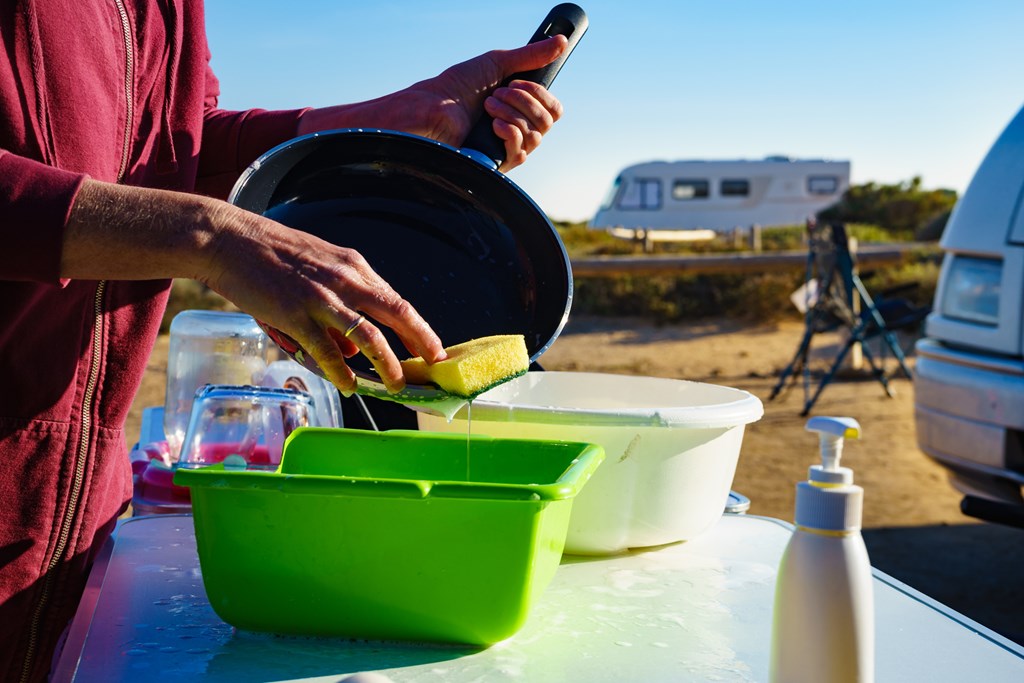
7. Clean and Green: Keeping Your Camp Kitchen Sparkling Fresh
While the call of the wild may inspire rugged adventures, maintaining cleanliness is key to a successful camping cooking experience. Just because you’re dining al fresco doesn’t mean you have to sacrifice hygiene. With a few simple tools and techniques, you can keep your camp kitchen sparkling clean and your meals deliciously safe.
First things first, arm yourself with the right cleaning supplies. Eco-friendly soap is a must, not only for washing dishes but also for minimizing your environmental impact. Pack absorbent towels or microfiber cloths for drying, as well as dual-purpose dish tubs for soaking and rinsing.
When it comes to cleaning up after meals, follow a systematic approach:
- Preparation: Start by scraping off any food residue from your cookware and plates using a scraper or paper towels, not only easing the cleaning process but also reducing waste.
- Washing Process: Fill one dish tub with warm, soapy water for washing and another with clean water for rinsing. Scrub your dishes thoroughly with a sponge or scrubber, ensuring all stubborn stains and grease are removed. Rinse them in the clean water tub to eliminate any soap residue.
- Extra Scrubbing: For pots and cooking utensils, which may be dirtier than dishes, give them an additional thorough scrubbing to ensure they’re clean and safe for your next meal.
- Drying: Once everything is clean, use towels to dry your dishes or set them out to air dry, ensuring they’re ready for future use.
- Waste Disposal: Properly dispose of food waste by packing leftovers in reusable containers and discarding any food waste in designated bins at your campsite. If you’re in a wilderness area, ensure you pack out your trash to leave no trace behind.
By following these simple tips and techniques, you can ensure that your camp kitchen stays clean and hygienic throughout your outdoor adventures. So don’t let the fear of cleanup deter you from enjoying delicious meals in the great outdoors. With a little effort and the right tools, you can have your camp kitchen running like a well-oiled machine.

Leslie, a.k.a. Copy Girl, is a copywriter who gets butterflies from telling stories through words.
Her voice comes from a place filled with passion, dreams, and lots of sugar. “Cake over steak” is her go-to motto.
With over 10 years of experience in crafting words, and years of embarking on travels that have taken this Montana girl to some incredible places, Leslie love the adventures of both body and mind her writing takes her on.
Everywhere she goes, she takes this advice with her:
“Hold on to your divine blush, your innate rosy magic, or end up brown.” – Tom Robbins, Jitterbug Perfume
To see what Leslie’s up to in the writing world, visit her website here.






